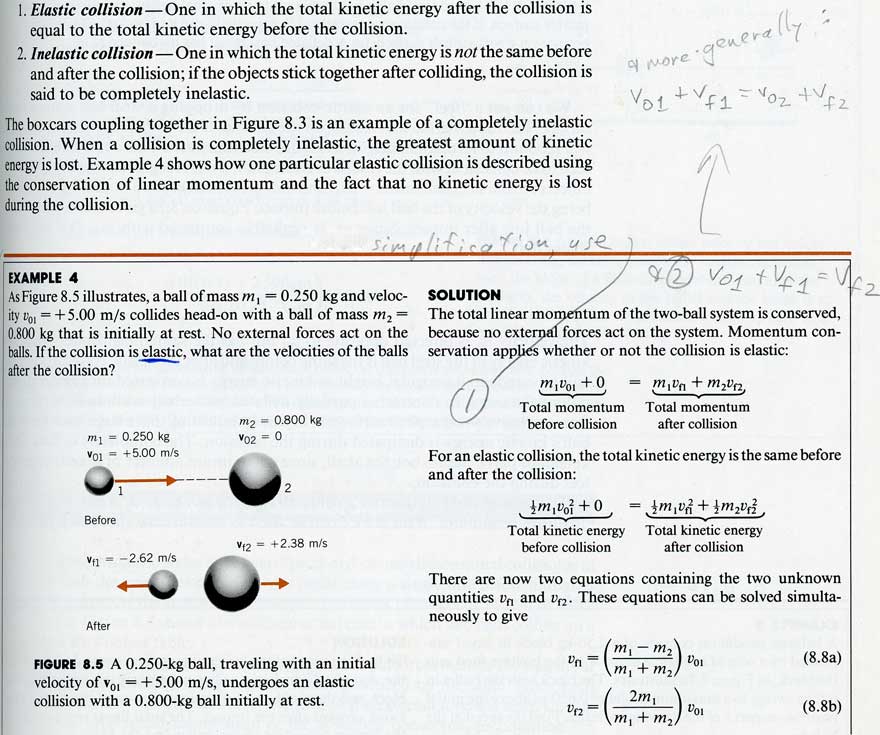| BEYOND THE PERSONAL BEST METHOD: THE RECIPROCAL PRESENTATION OF MINI-LECTURES |
The personal best method is eminently suited for young students, but is increasingly replaced by other methodologies at more advanced levels of study, though always by methodologies in which student activity continues at a high rate.
For Marko and me, the most common activity in university courses was to take turns giving presentations to each other, either on a blackboard in an empty classroom on campus or else on a large sheet of newsprint (2x3 ft which is 61x92 cm) taped to a picture window at home. The presentations would usually be either solutions to assigned problems, or summaries of sub-areas of a course. Because anybody watching this sort of presentation typically goes into a passive trance in which he gazes without comprehension — into regular-student mode, in other words — it became necessary for the speaker to keep his viewer alert by deliberately making mistakes which the viewer was expected to catch.
Unfortunately, little thought was given at the time to creating historical documentation of our activities. The single relevant photograph that I know of at the moment is the one below showing Marko at the blackboard in an empty UBC classroom outlining a Physics 110 sub-area which I think we referred to as "spectral shifts". Had we been actually presenting such mini-lectures to a classroom of students, we would have been much neater, but as we were presenting to each other, and over and over again, and as the viewer already knew the content, high speed took precedence over neatness.

The newsprint exercises were produced in profusion, and seeming to be of no further value, were habitually discarded. I came across the one below because it had been saved, along with other papers, folded up in an envelope labelled
MARKO'S |

I see on the upper-left that Marko started off by writing a simple computer program in Scheme — summing the integers 1 through 17. Must have been the very beginning of the course, or what? I bet the 1:32 on the upper-right is how long it took him to write it. Looks to me like I wrote pretty much the same program to the right of his (I tended to write in all caps, and he in lower-case). Perhaps I was pointing out improvements which he then incorporated into his second go at it, right below his first. The time of 1:47 that I can compute from two times written on the right was most likely my time.
The reason that this newsprint was saved, though, is not because of its Scheme programs which were elementary and unexceptional, but because of the physics that followed, all of it Marko's, and which was quite exceptional.
It started with Marko noticing that the solution in the Example 4 problem below, from his UBC Physics 110 textbook, was needlessly complicated, and could be greatly simplified through use of equations that he devised himself, and whose derivation he had explained to me on the newsprint above.


John D. Cutnell and Kenneth W. Johnson, Physics, Wiley, New York, 1989, pp. 163-164.
In preparing to present his discovery to the course instructor, Dr Michael Crooks, Marko wrote an outline of what he needed to say on a piece of yellow paper:

Marko is shown below visiting Dr Crooks concerning a different matter. The blackboard on which Marko wrote when explaining his simplified solution to Dr Crooks is the board behind him in the photo.

Now when Marko began his presentation to Dr Crooks (and also to a Physics graduate student who happened to be there at the time) he was holding the yellow paper in his left hand and writing on the board with his right, but consulting the paper so often, and proceeding so haltingly, as to give the impression that he was merely copying from yellow paper to blackboard material which he did not understand, so I said, "Marko, that piece of paper is just slowing you down", whereupon he instantly took a couple of steps to the nearest convenient resting place for the paper — Dr Crooks' desk — slapped the paper down on it, walked back to the blackboard, and dashed off his proof rapidly and unerringly, leaving Dr Crooks with a very positive and totally convincing impression. I wish I had brought my camera.
I present the spectral-shifts photogaph and the newsprint page by way of explaining that flash-card decks were largely supplanted when working at the university level, supplanted by what may be called the reciprocal presentation of mini-lectures, in which the passivity of the viewer was prevented by his being required to catch the errors that the lecturer deliberately sprinkled. The mini-lectures were timed, and there was some motivation to deliver them faster than before, and also faster than the competition. It was repeatedly experienced by both of us that the rapid delivery of complex material is inherently satisfying.
But as the newsprint exercise page that happened to be available also happened to contain Marko's insightful simplification of an otherwise long and awkward solution to a physics problem, I am seizing the opportunity to also propose that TBT produces students who have the capability of going beyond mastering various curriculums, who have the capability of discovering clarifications that experts in an area had been unable to see. I am proposing, in other words, that TBT teaches creativity.